Chicago Citation Generator
Quickly create accurate Chicago citations with a free Chicago citation generator built
by writing experts and powered by AI.
Citation Information
Chicago Full Citation Preview
Add your citation information, and we'll format it here.

A Better Way to Work
Feel confident you've done your best work with the help of Grammarly. Benefit from:
Grammarly offers comprehensive AI-powered writing assistance to help you refine your ideas, improve your writing, check for plagiarism, and more.
Your AI Writing Partner for Every Stage
of the Writing Process
Brainstorm, outline, and refine ideas with generative AI, cite sources in a few clicks,
and get comprehensive suggestions to improve your writing.
Get citations within seconds
Instantly get pre-made in-text and full APA citations with Grammarly’s auto-citations tool, which works within top source sites like Wikipedia, Frontiers, and ScienceDirect.
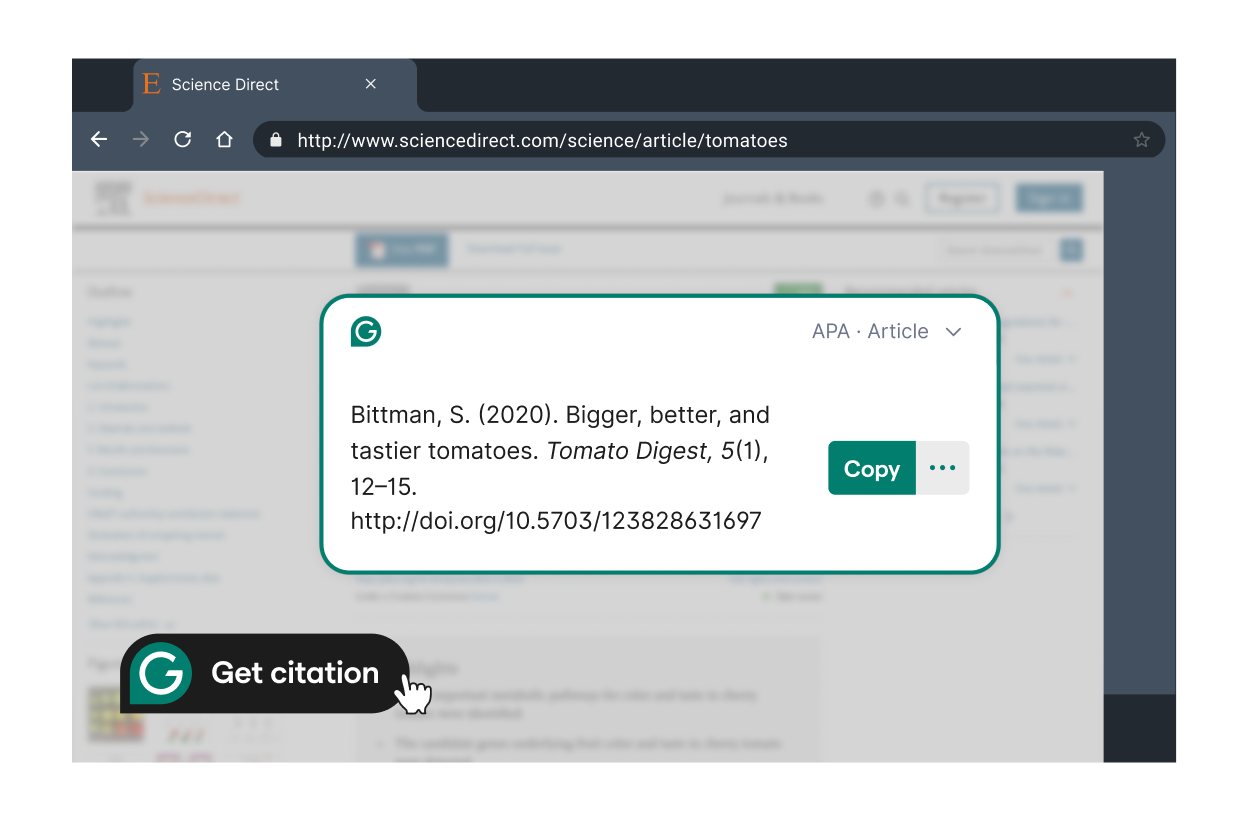
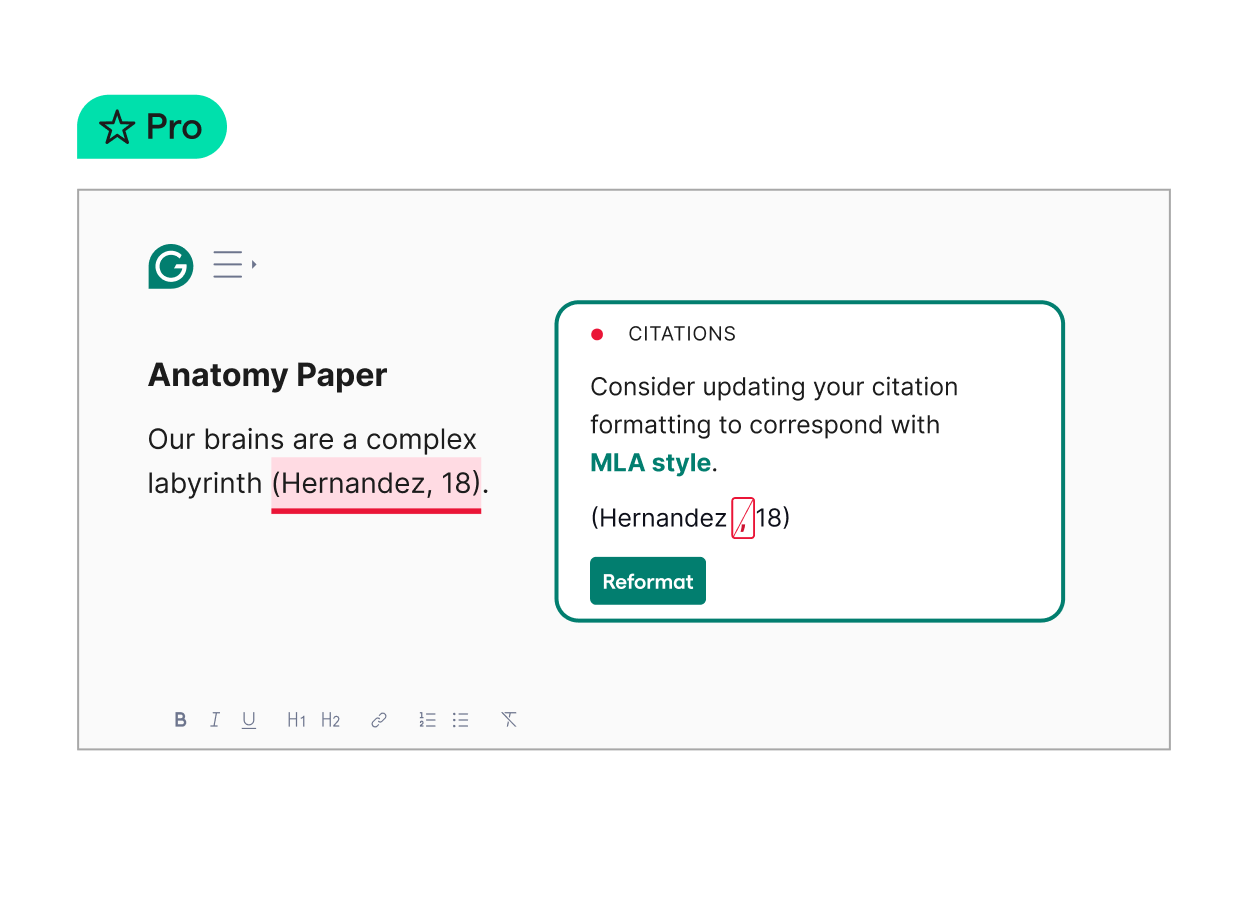
Never lose points over
citation formatting
Perfect your citation's periods, parentheses, and more with the help of Grammarly's citation style formatting, which always stays up to date with the latest versions of APA, MLA, and Chicago style guides.
Keep your writing original
Avoid accidental plagiarism. Grammarly identifies passages that may need references while you write and shows you source information.
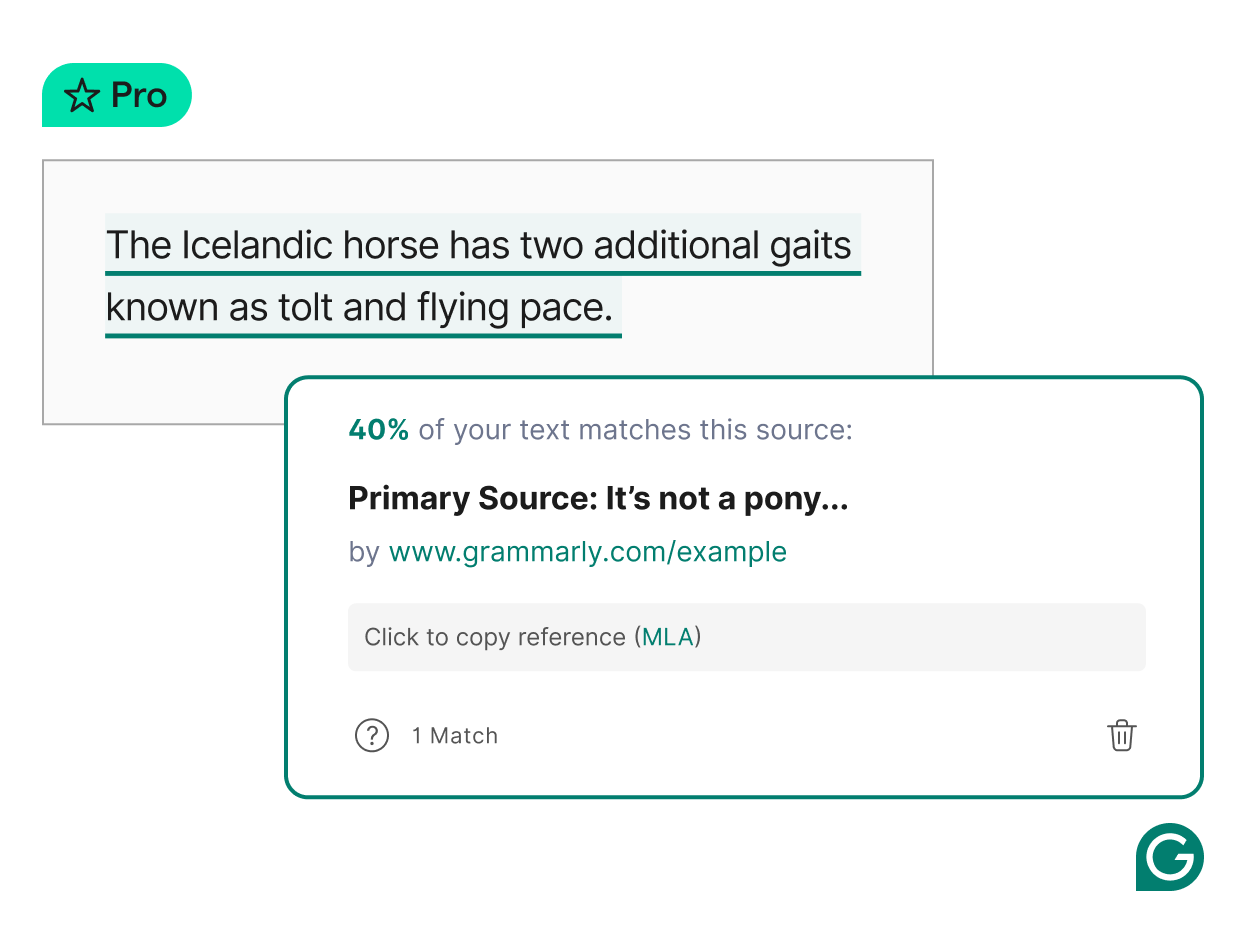
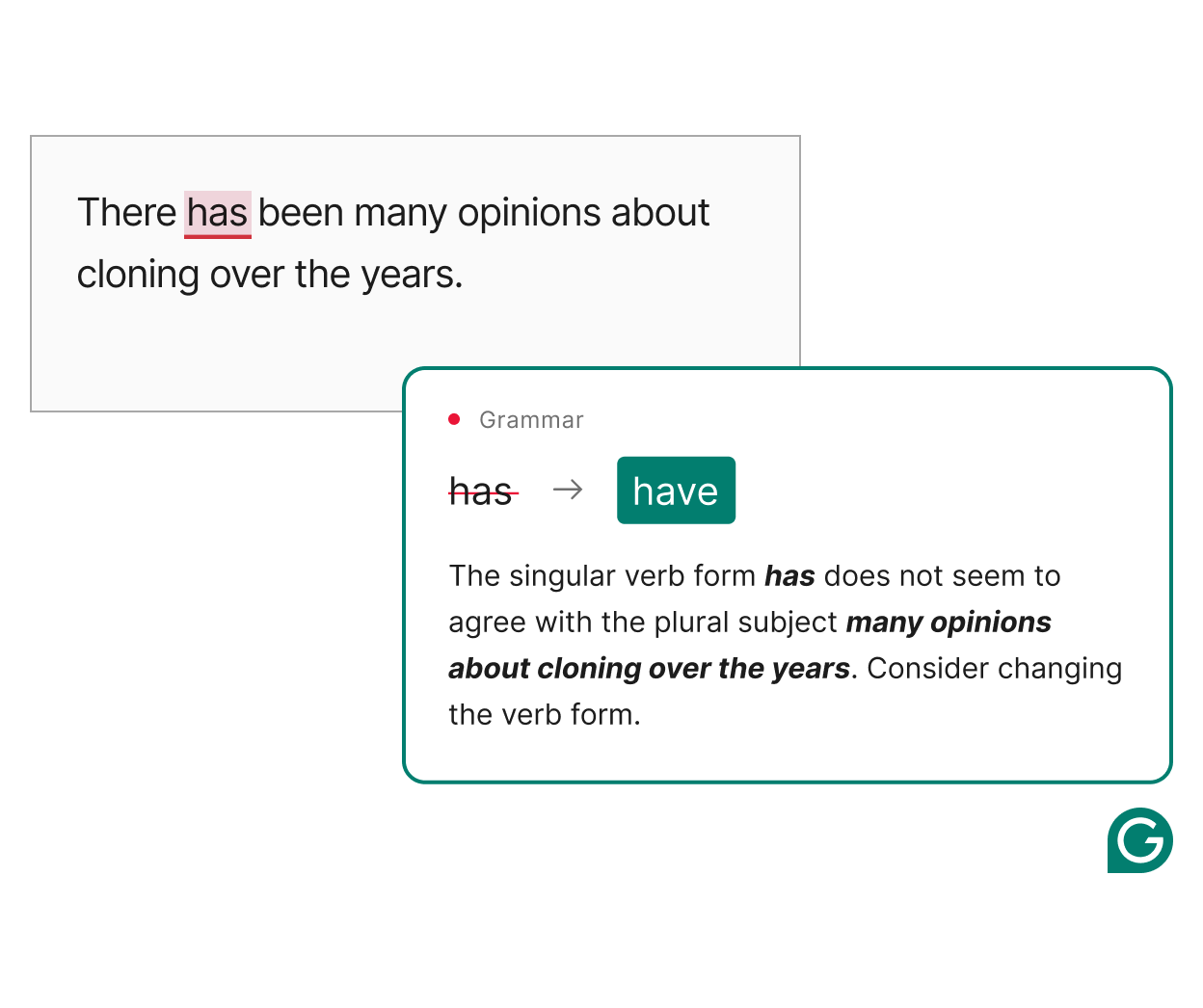
Proofread with ease
With just a few clicks, clean up typos, subtle grammatical mistakes, and misplaced punctuation you might otherwise miss.
Trusted by Students and Educators at Over 3,000 Institutions, Including:


































































































“Grammarly's citation features save me time and stress as I know my referencing has been taken care of for me. Life-saver!”

Lauren Hawke
Student, Human Nutrition
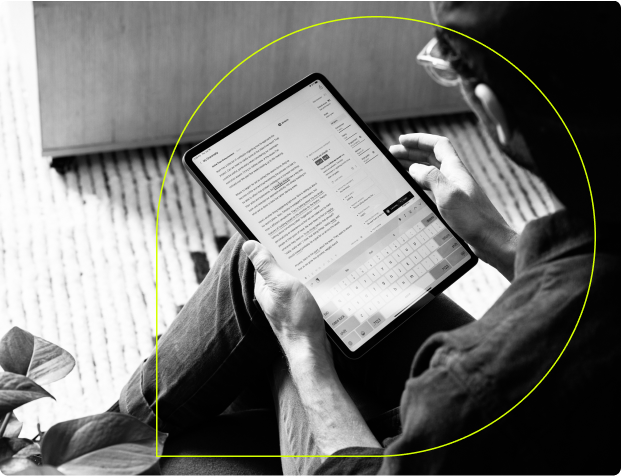
A Guide to Chicago-Style Citations
Chicago Manual of Style citations are most frequently used in papers on history, business, the fine arts, and in some cases, the humanities. In Chicago, there are more variables than in most other style guides. For example, it has two different citation systems: Notes-Bibliography and Author-Date. Both include guidelines for in-text citations and both follow similar bibliography structures. Either of these citation systems is acceptable for a paper formatted in Chicago style, but your instructor may require that you use one or the other. Read on and learn how to create in-text and full Chicago citations for both systems, how Chicago differs from other academic style guides, and more.
How to write a full Chicago citation
Full Chicago citations are listed on a comprehensive references page either titled "Bibliography" if you use the Notes-Bibliography system or "References" if you use the Author-Date system. In both systems, sources are cited in the same format except for the placement of the work’s publication date. In the Author-Date style, it’s listed immediately after the author’s name. In the Notes-Bibliography style, it goes toward the end of the citation. Its exact location depends on the type of source being cited, such as a movie, Wikipedia article, website, or YouTube video.
Notes-Bibliography:

Author-Date:

How to write an in-text Chicago citation
The Notes-Bibliography citation style is the same as footnotes. If you’re using the Notes-Bibliography citation style, note each in-text citation with a superscript number, then list these citations according to their numbers at the bottom of the page, beneath a horizontal line that extends midsentence.
Here is an example of how an in-text citation in Notes-Bibliography style would look on a page:
Here is an example of how an in-text citation in Notes-Bibliography style would look on a page:
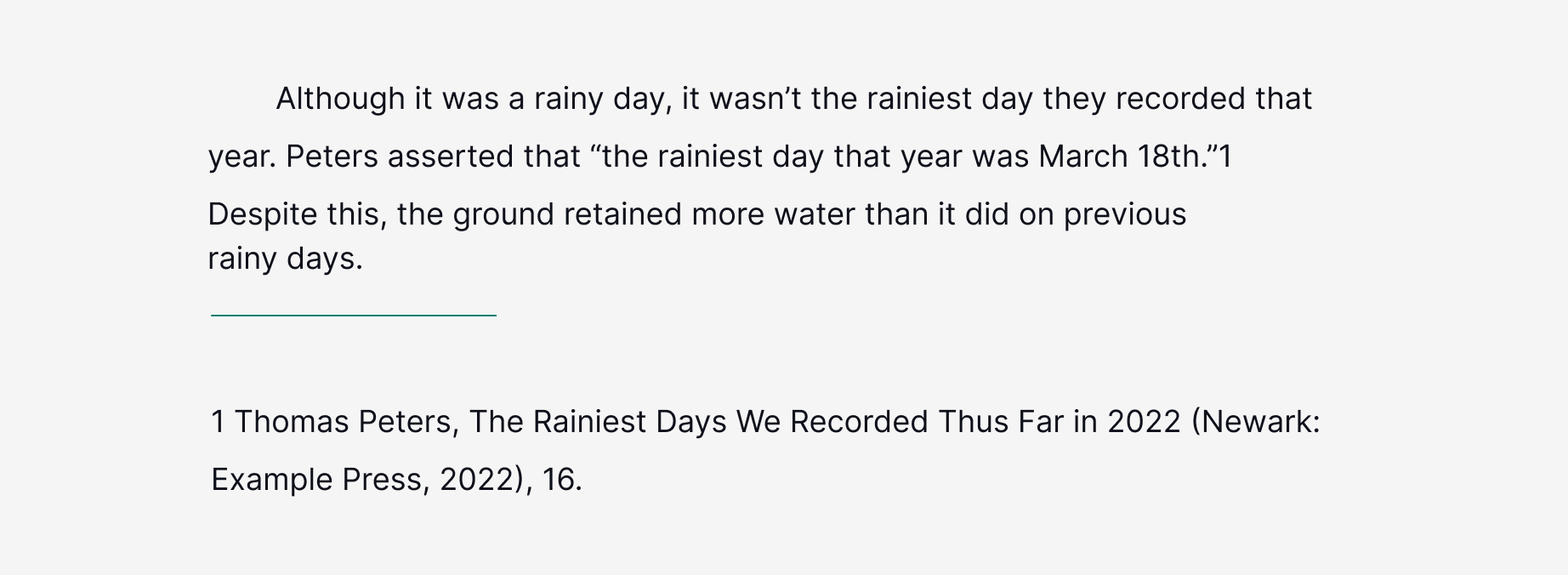
With the Author-Date system, in-text citations look a bit different. Here is the same example, but using the Author-Date citation format:

Although no footnote is required with the Author-Date format, an endnote is required at the end of each section of the paper. An endnote is formatted identically to a footnote.
To learn more about how to do Chicago citations for specific sources, check out the links in the section below.
Chicago Citations vs. Other Formats
You may be asked to use APA-format or MLA-format citations instead of Chicago-style citations on some assignments. APA format is used for the sciences and education.
Unlike APA, it’s not always clear when you should use Chicago versus MLA. Chicago is typically the go-to style guide for history, business, and fine arts papers, but Chicago or MLA may be used for other humanities subjects, like literature and theater. Generally, MLA is the preferred style guide for humanities work at the undergraduate level, whereas Chicago is more common at the graduate level.
Getting citation formatting right can be time-consuming and tricky . . . but don't worry! The free citation generator at the top of this page is an excellent resource. Use it to quickly and accurately create citations in Chicago, MLA, or APA.
To learn more about how to do Chicago citations for specific sources, check out the links in the section below.
Unlike APA, it’s not always clear when you should use Chicago versus MLA. Chicago is typically the go-to style guide for history, business, and fine arts papers, but Chicago or MLA may be used for other humanities subjects, like literature and theater. Generally, MLA is the preferred style guide for humanities work at the undergraduate level, whereas Chicago is more common at the graduate level.
Getting citation formatting right can be time-consuming and tricky . . . but don't worry! The free citation generator at the top of this page is an excellent resource. Use it to quickly and accurately create citations in Chicago, MLA, or APA.
To learn more about how to do Chicago citations for specific sources, check out the links in the section below.
How to Cite (Practically) Anything in
Chicago Style
How do in-text citations work? Can you cite Wikipedia? What do you do if the scientific article has 25 authors, or the photo was published anonymously? Is your references page formatted appropriately? Fear no more—these articles guide you through common (and uncommon!) source variations so you can cite accurately.
Improve Your Writing and
Boost Your Grades
Join students from over 3,000 institutions worldwide to see why 94% of them say Grammarly helped improve their grades.